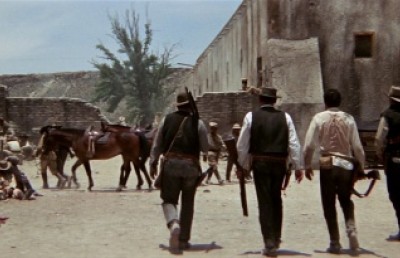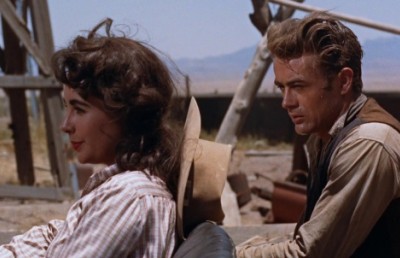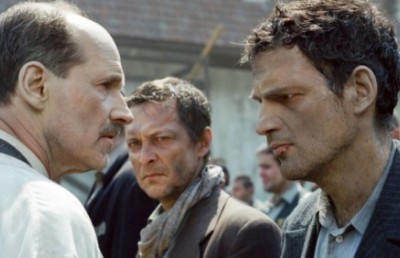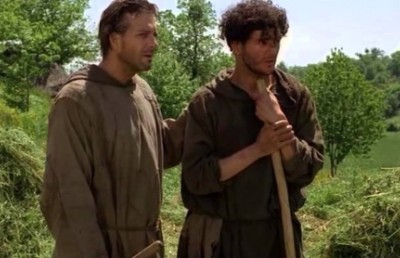Expressions of Generational Conflict: Elia Kazan’s film interpretation of John Steinbeck’s East of Eden, featuring James Dean
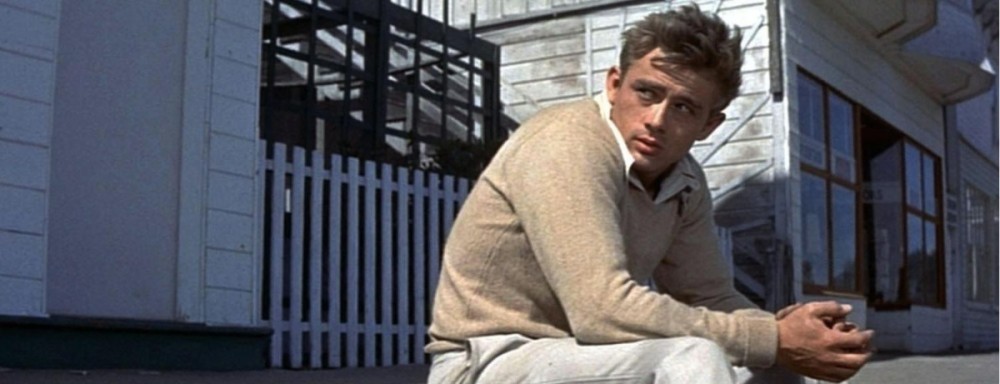
John Steinbeck was a great writer. John Steinbeck was a terrible writer. Steinbeck’s novel East of Eden is a wonderful book. East of Eden is the kind of book that makes some readers cringe. The film Elia Kazan made of the last part of the book East of Eden is a classic. Kazan’s East of Eden is overheated melodrama. Different kinds of things have been said about both the book and the film East of Eden: the book was the telling of the founding of a community, the changes of places and people in character, look, and purpose; and the film, showing the conflict between father and son, was an announcement of a new sensibility—both suggested the possibilities of American freedom. What is the nature of liberty—and of constraint? When a society is simple, the people are either barbaric or quite mannered or a dismaying mixture of both. In a society with few established institutions and rules, personal manner and social custom have to carry the weight of a civilization. That can create a culture of rituals and rules that suggest conscious negotiation or even repression. When a society becomes more elaborate, with many institutions and laws, the people are regulated by others rather than self—the people can conform or become rebellious. In the twentieth century in America, conformity began to give way to rebellion. Individuality became prized. Emotion rather than reason began to have a special place in the regard of youth and in the estimation of almost everyone. Director Elia Kazan’s film of John Steinbeck’s East of Eden embodied and facilitated the transition to a more expressive culture.
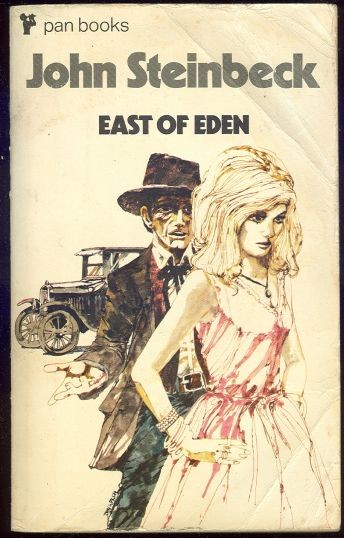
John Steinbeck wrote The Grapes of Wrath (1939), Of Mice and Men (1937) and dozens of other books. Steinbeck’s desire to do work that reached people is admirable, charming too. His characters and stories, his world and its depiction, remain engaging, despite the passage of time, despite one’s understanding of his limits as writer. Elia Kazan’s East of Eden (1955), inspired by John Steinbeck’s novel, with a script by Paul Osborn, is set in the early twentieth century at the time of the first world war, in Salinas, California, and very much focused on the young, on Cal Trask (James Dean), a sensitive and shrewd but wild boy whose alienation from his father Adam Trask (Raymond Massey), a man of stern principal, produces a certain distance in Cal’s other relationships, including with Cal’s brother Aron (Richard Davalos), an idealistic and principled young man, and Aron’s girlfriend Abra (Julie Harris), a decent and intelligent girl who becomes more drawn to Cal’s roiling inner life. James Dean conveys a portrait of a young man with much to say but difficulty saying it: a neglected gem. The life of Cal and Aron is influenced by a past they have not known, that of their father and mother—and the dissolution of their parent’s marriage: they have been told that their mother died, but she is alive, the owner of a brothel. It is news—news of human complexity and fault—that Cal welcomes, as it explains things he has intuited: his recognition of a life beyond what is obvious, and his own inclination toward defying his father’s rigid moral code.
Cal, a boy of shifting moods, loves his father but cannot please Adam Trask as easily as Cal’s handsome, disciplined brother Aron can, not even when Cal helps his father with plans for a vegetable train transport project—or when Cal makes money through an investment: after the transport project fails due to the difficulty of maintaining the cool temperature of the carriages required to ship lettuce, Cal gets a loan from his mother Kate (Jo Van Fleet), whose brothel services men high and low, and invests in a in a bean-growing business (the beautiful, awkward boy dances in anticipation and pleasure in a bean field; and sells the beans at profit). Adam Trask is a man whose Biblical values are little questioned in a small town, and Adam sees everything simply and severely: Adam thinks of what his son has done as profiting from the deficiencies caused by the war. Adam Trask’s rejection of his son’s character and efforts are damning: they wound Cal and make him cruel towards the favoured son, Aron—Cal shows Aron what Cal has learned of their mother’s true state—and Aron cannot bear the truth. The film put the focus on the complicated feelings of youth, on the yearning for approval and the beginning of erotic desire; and that was something new in American culture—even seeing those feelings as complicated was something new: the identification of a distinct state of being, of a unique sensibility. The young were different. Yet, the story touched something primal, a basic competition for favour, for recognition and love, as old as the legend of Cain and Abel, the sons of Adam and Eve—the farmer Cain killed the shepherd Abel out of jealousy.
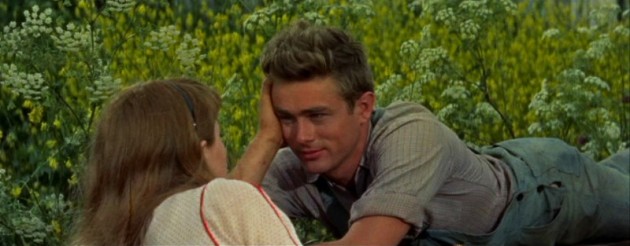
The motion picture East of Eden was a drama of family and love, presented in intimate and natural settings, though with an experimental impulse: a theatrical flair, with a sense of revelation, and the use of distorted angles, different lenses, and peculiar lighting to intensify the effect of the story. The camera of cinematographer Ted McCord follows the characters as a witness and a judge (the film was edited by Owen Marks). Both the film’s director Elia Kazan and its star James Dean saw elements of their conflicts with their own father in the film’s story—and they were not the only ones: the film was, and is, resonant—its appeal was as personal as it was cinematic, possibly more so. Yet, in March 10, 1955 New York Times, the film reviewer Bosley Crowther found the presentation and exploration of the scenario not distinct enough: “For the stubborn fact is that the people who move about in this film are not sufficiently well established to give point to the anguish through which they go, and the demonstrations of their torment are perceptibly stylized and grotesque. Especially is this true of James Dean in the role of the confused and cranky Cal. This young actor, who is here doing his first big screen stint, is a mass of histrionic gingerbread.” Pauline Kael was skeptical about the beautiful desperation that Dean embodied before an infatuated camera (I Lost It At the Movies). It seems possible that they found the mere focus on the feelings of a boy to be an inadequate subject. What, after all, was a stake in how he felt? Were there any larger social implications? It is possible that whenever a new reality, a new sensibility, emerges it is hard to discern at first. Yet, the things Crowther and Kael found odd—the reification of the roles of father and sons, and the respect paid to a boy’s hurt feelings—would become the very center of the generation gap that would drive so much of American culture in decades to come, whether in the rock music and experiments with sex and drugs or the anti-war politics of the second half of the century. Crowther perceived the characters as types, but, although that might have been a liability at another time, it became a strength: the stiffened father and his twisting son became symbols. The beautiful desperation Kael questioned was alluring to others. A critical evaluation of the inherited principles of discipline, maturity, and reason took place; and a different way of being was acknowledged and pursued. James Dean became an icon.
Surprisingly, David Walsh of the World Socialist Web Site commended Kazan for his distinguished work with some gifted actors but doubted Kazan’s mastery as a storyteller and filmmaker, and wrote as late as February 20, 1999, at the time of the tribute to Elia Kazan at the Academy Awards: “One has a more difficult time, however, in establishing consistent themes that run through Kazan’s work. There is a general hostility to bigotry and philistinism, to official abuse of power and a mistrust of dogmatism and rigidity. A demanding or oppressive father and a troubled son make appearances in several of his films (Sea of Grass, East of Eden, Splendor in the Grass). But these are rather diffuse notions or relationships and rather diffusely represented.” Such an equivocation is surprising for a filmmaker whose films often are discussed as classics—though they may be classics by popular acclaim. David Walsh thinks that much of the vagueness in Kazan’s work is due to his repudiation of his radical past—with fuzzy thinking leading to fuzzy technique, one assumes. Walsh adds, “James Dean aspired to be another Brando. He never came close to being that, but he is occasionally affecting (and sometimes irritating) in Steinbeck’s East of Eden, a modern retelling of the Cain and Abel story. The film drags on, however, and the various relationships, which are not all that startling or revealing to begin with, take an interminable amount of time to establish. It takes Kazan 45 minutes to lay out relations that a Douglas Sirk or a Michael Curtiz could have made clear in three or four shots.”
Many other critics would disagree with the early assessments of the film, and with the reservations maintained by some later critics, of course: that is what happens in a changed world. In the June 10, 2005 The Los Angeles Times on the occasion of a 50th anniversary screening Kenneth Turan wrote, “A Cain and Abel story set in Salinas and Monterey before and during World War I, East is not only one of Kazan’s richest films and Dean’s first significant role, it is also arguably the actor’s best performance.” The film had long been a popular favorite partly for the appeal of James Dean but also for the story itself, the generational conflict.
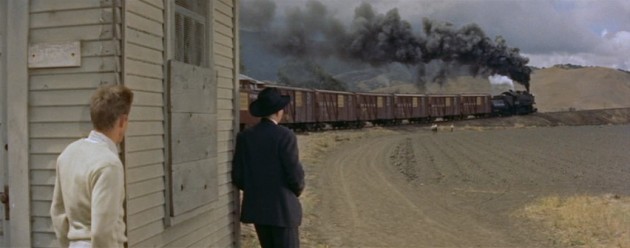
In Film Culture (May-June 1955), Andrew Sarris wrote that Kazan had matched his volatile technique to an appropriate subject—the blend of aggression and vulnerability in Cal, in his response to his father and brother. Andrew Sarris in a Senses of Cinema interview (June 2001) remembered, “When I reviewed East of Eden (Elia Kazan, 1955) for Film Culture in 1956 or 1957, I think it was Chabrol who described my review as ‘annoying.’ And he was right. I was describing the film in purely sociological terms, so the French saw one movie and we listened to another. But if you just look at that film, if you just see what’s happening visually, it’s quite a different movie. This doesn’t mean I think that movies have to be stupid and clumsy, but I do at times have to readjust my viewing and really study films again.”
East of Eden is a beautiful film, full of tormented energy and lovely landscapes and strange angles—but one wants more than intriguing pictures from cinema. One of the most significant scenes in the film East of Eden is when the people of the town of Salinas turn against a German man they have known for years, but whose national allegiance they doubt in a time of war. The bigotry is violent—and Cal defends the German shoemaker and his brother during a resulting fight. That is an important scene, as it suggests that narrow views of humanity are current in both public and private life. The most painful scene in the film occurs when Cal and Abra have organized a birthday party for Adam Trask, and Cal presents his father Adam with the money Cal has made from his agricultural investment, enough to make up for what Adam lost in his own business venture. Out of principle, Adam rejects the money: and Cal turns away in pain and anger, realizing that he and his father are so profoundly different—and that his father is incapable of respecting his actions or his intentions—that he is not likely to ever gain his acceptance and high regard. James Dean as Cal turns away slowly, the differing emotions registering. Cal runs out. Julie Harris as Abra consoles Cal, kissing him; and Richard Davalos as Aron, seeing Abra’s consolation of Cal, is disapproving, disturbed, forbidding their association. Both the father Adam and the son Aron call Cal bad—which, here, means not merely inclined to defy principle or rule but also complex and mysterious and yet self-aware, driven by individual motive. Abra has felt as if Aron was too principled for her, as if she were not good enough for him: thus, she has sympathy for Cal. Aron has the father’s love and Abra’s devotion and Cal feels alone—and Cal has his vengeance by annihilating Aron’s fantasy of an ideal, lost mother, a reality—mother as whore, rather than virgin or lady—that intoxicates, that poisons, Aron, sending him to join the war and seek his death.¬
If one has not read John Steinbeck’s book East of Eden (1952) or not read it in a long time, it is easy to forget that the film by Elia Kazan does not tell the whole story. It is a story of geography and community and family, a story of ethics and choice. It contains analysis and description and expression—poetry. It contains wisdom. It is a book that I first read when I was a boy, and have read again at different times. East of Eden is a large, long story about two families, the Hamilton family and the Trask family, one that is happy and one that is not. Samuel Hamilton is a good man with a large, loving family, in the late 1800s; and Adam Trask is a man who wants to be good and has a more troubled family. Adam has a brother, Charles, who resents Adam for being their father Cyrus’s favorite; and Adam finds and marries an injured young woman Cathy (Kate), an attractive but cold woman, with whom Charles has a tryst: Charles and Cathy share cynicism about human nature. Cathy gives birth to two boys, Aron and Cal, but does not stay to mother them—she shoots and leaves Adam and takes over the brothel of a madam she slowly murders with chemical poison. Adam neglects his sons for a time, refusing to name them. Samuel Hamilton knows the truth about Cathy’s prostitution—and, to wake Adam from his dream of her, tells Adam, whose good intentions do not make him a good father. Adam’s sons Aron and Cal are different from each other—as Adam was different from his own brother Charles and from his wife Cathy. The growing Cal worries about his own nature, about fate, but the Chinese man who works in his father Adam’s house, Lee, tells Cal that Cal can choose his own life, his own moral code and direction. With a few changes (such as Aron going to college and returning for Thanksgiving), much of the film about the life of Cal and Aron follows the general plot of the book.
Steinbeck’s grasp of the nature of the world and the nature of people is easily engaging. What I have liked about the book is the range of its vision, even while recognizing that the book contains what might be perceived as weakness—lavish sentiment and the inclination to be precise in its articulation of wisdom. Samuel Hamilton, a loved and loving man, is given to language that is full of charm, invention, obscurity—poetry; and he is an ideal man, a contrast to some of the other men in the book. It is easy to see what a complete text Steinbeck wanted to create, a book that would be one of beauty and use. Steinbeck wrote of mundane life and mythic life. Cain and Abel gives the story a reference that is common to all readers. While narrating a story about the hatred that can occur between men, Steinbeck also creates several friendship stories, love stories between men: between Samuel and Adam; and between Samuel and his houseman Lee, who confers not only with Samuel but with Chinese scholars in his attempts to understand the Christian bible, an evocation of the passion for learning, for philosophy. The male love is something Steinbeck must have wanted, needed, and felt—it is rendered with power. Steinbeck gives us the signified, not merely the sign. It may be too much for people—too much language, too much passion. There is a point when one perspective blurs into another—possibly too exact an expression of the idea that we are all the same.
John Steinbeck remains among the most popular of writers, his books taught in schools and selling hundreds of thousands of copies a year (there are plans for a new film version of East of Eden, announced by director Gary Ross). Yet, his detractors are not quiet. What were Steinbeck’s faults as a writer? As far back as 1967, there was acknowledgement and discussion of Steinbeck’s declining reputation: a book by Donald Boone Smith was published on the subject by the University of New Mexico that year: The Decline of John Steinbeck’s Reputation Since World War II. The decline was such that when he won the Nobel prize, there were literary Americans who objected. There are worst things than being a writer who wants to make a portrait of community and history, of family and friendship and love, of beauty and use. The basic problem for Steinbeck may be one of technique, of a passion beyond control—something that made Steinbeck a man of his time, a man for the twentieth century. Elia Kazan took Steinbeck’s book East of Eden and cut away much of the origin story and kept the part about two twentieth century boys and their conflicts. That—conflict—was something most of us, then and now, can understand.
(Article submitted March 27, 2015)


